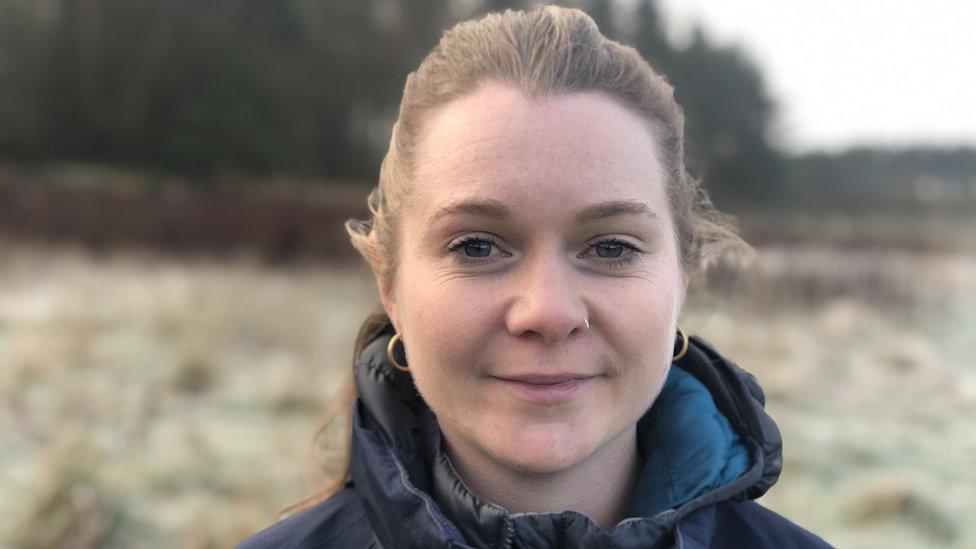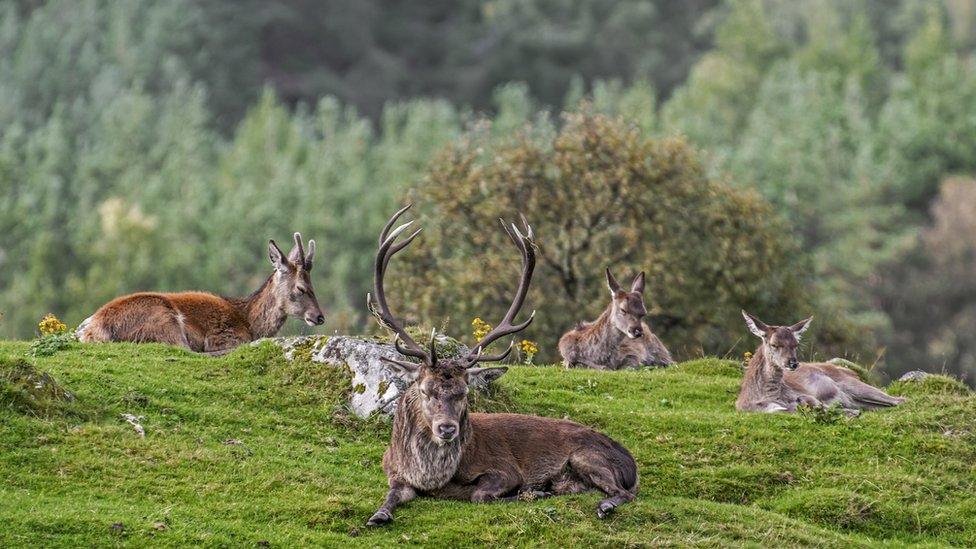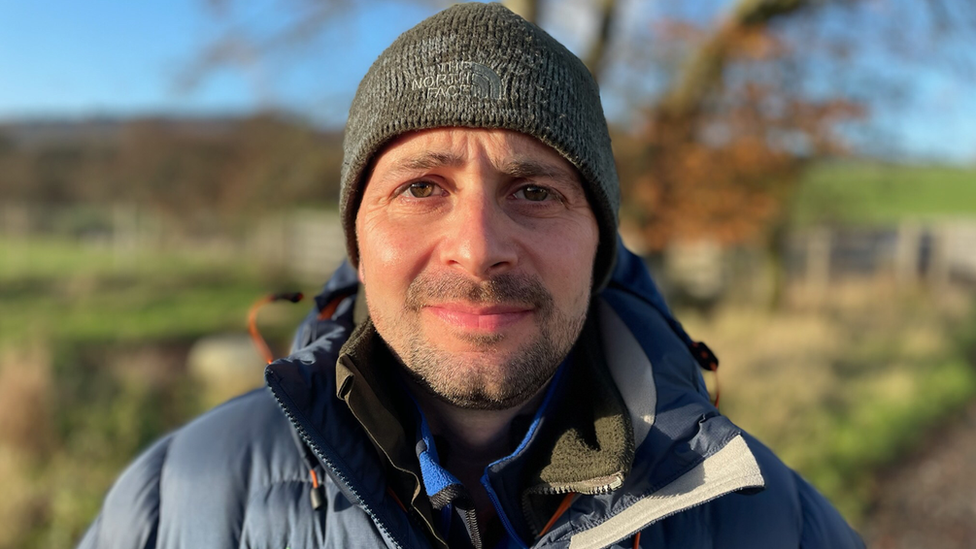Progress in protected nature areas is stalling, says report
- Published
- comments
Woodland Trust Scotland volunteer parties tackle rhododendron ponticum
Progress to improve areas of Scotland which are protected for nature has stalled, a report warns.
About 18% of the land is now legally protected but Scottish Environment Link says some protection is not effective.
Its report calls for a more strategic approach to improving conditions in protected areas like tackling the spread of rhododendron and better deer management.
The Scottish government says it will set out plans to halt the decline soon.
While there are more than 1,800 protected areas in Scotland, the report found one in five features in those areas is in an unfavourable condition.
The amount assessed as in a good health has fallen over the last 15 years to 65%.
Ministers have committed to protect at least 30% of Scotland's land and sea by 2030 with a higher level of protection for a third of those areas.
It is hoped world leaders at the United Nations' COP15 biodiversity conference in Montreal this week will agree a global pact to do the same.

Isobel Mercer believes a drop in budgets could be adding to the problem
The report's author, Isobel Mercer, told BBC Scotland: "We need to see a step change to get all of those designated features into a favourable condition.
"And that's going to require a much more strategic approach to the way that we manage those special sites for nature.
"We've definitely seen a decline in budgets for things like the management and monitoring of sites over the last couple of decades which could be causing some of the issues."
The report says invasive plants - particularly rhododendron ponticum - need to be better tackled in protected areas.
The plant was introduced as an ornamental shrub from Asia in the 19th Century but has become one of the biggest threats to native species in Scotland.
Threat to native species
Woodland Trust Scotland has estimated that 140,000 hectares of rainforest is affected by that variety of the rhododendron plant, which smothers the ground and reduces biodiversity.
Teams of volunteers have been at work trying to cut them back, most recently at Kinclaven Bluebell Woods near Stanley in Perthshire.
Arina Russell, policy and advocacy manager at Woodland Trust Scotland, said: "We know our nature is in trouble, particularly our native and ancient woodlands, and rhododendron ponticum is actually one of the key threats.
"It just chokes a site or a woodland. Trees are not able to regenerate naturally. It shades out all the vegetation, the flora, and takes over a site. So, it's really, really invasive."

Landowners are encouraged to monitor growing deer numbers
The other big threat comes from deer management, with high numbers of the animals causing over-grazing which can also prevent nature from thriving.
Groups of landowners are encouraged to monitor deer numbers and keep them down to sustainable levels.
A review for the Scottish government in 2020, prompted by a population explosion, said numbers should be cut sharply in some areas.
Jamie Hammond, from NatureScot's deer management team, said: "They're herbivores, they're grazers so they could be eating certain types of trees, whether that's new regenerative growth or commercial forestry.
"The bottom line is we don't know how many deer we've got in Scotland.
"Having that balance between numbers of deer being managed effectively and sustainably, recognising that they have an impact but are a recognisable species for Scotland, they're an iconic species and we have a whole industry around people wishing to see deer."

NatureScot's Jamie Hammond believes a balance has to be struck over deer numbers
The Scottish Environment Link report, called "Protecting 30% of Scotland's land and sea for nature", says that nature is being squeezed into smaller areas because of human activity.
Since 1970, it says nearly 50% of our species has declined and that one in nine is now at risk of national extinction.
The Scottish government's biodiversity minister, Lorna Slater, has welcomed the report.
She said: "We are already investing in our land and at seas through our £65m Nature Restoration Fund, expanding nature networks, and the establishment of a new National Park.
"We will soon publish a new national strategy, setting out our plans to stop the decline in biodiversity by 2030 and to restore it by 2045."